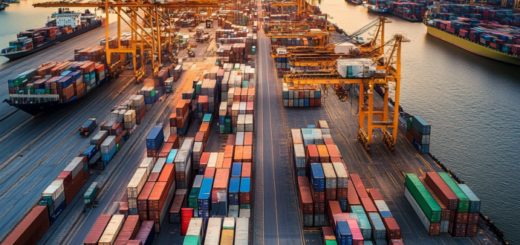Predictive risk management: leveraging AI & machine learning to safeguard global supply chains
Traditional supply chain risk management relies on historical data and reactive firefighting, leaving companies vulnerable to emerging threats. Predictive risk management powered by AI analyzes real-time and multi-source data streams to foresee disruptions before they escalate. Machine learning algorithms process satellite imagery of port congestion, social media sentiment indicating labor unrest, weather forecasts predicting typhoons, and IoT sensor data from cargo ships – identifying subtle patterns invisible to human analysts. This paradigm transforms risk management from damage control to strategic foresight, enabling pre-emptive rerouting, inventory buffering, or supplier diversification weeks before a crisis hits. The goal is not just resilience but operational continuity across diverse sectors, from electronics to Perfumery.
Data Integration: Building the Predictive Nerve Center
AI’s predictive power hinges on unified data ecosystems. Siloed information – ERP transaction records, AIS vessel tracking, supplier audit reports, geopolitical news feeds – creates blind spots. Intelligent data fusion platforms ingest structured and unstructured data from 200+ sources:
- Financial health indicators of Tier 2/3 suppliers
- Real-time container GPS positions and temperature logs
- Regional conflict intensity indices and regulatory change alerts
Natural Language Processing (NLP) mines regulatory documents and news in 50+ languages, flagging potential compliance shifts. Blockchain verifies supplier data integrity. Without this integrated foundation, predictive models lack context and accuracy.
AI Modeling: From Pattern Recognition to Scenario Simulation
Machine learning moves beyond simple anomaly detection. Recurrent Neural Networks (RNNs) analyze time-series data (e.g., port throughput trends) to forecast congestion probabilities. Graph neural networks map supplier interdependencies – simulating how a flood in Thailand cascades to semiconductor plants in Mexico. Multi-factor risk scoring engines assign dynamic threat levels (0-100) to shipments based on:
- Route vulnerability (piracy zones, choke points)
- Carrier reliability history
- Cargo sensitivity (temperature, theft appeal)
Prescriptive analytics then recommend optimal mitigation actions, such as splitting high-risk shipments or activating pre-vetted backup suppliers.
Early Warning Systems: Sensing the Weak Signals
Critical disruptions often begin with faint signals. AI identifies these through:
- Satellite thermal imaging detecting unusual factory heat signatures (indicating potential fire risk)
- Supplier payment behavior anomalies signaling financial distress
- Dark web chatter mentioning targeted cyberattacks on logistics firms
Real-time monitoring triggers alerts when risk scores breach predefined thresholds. A shipment traversing the Red Sea automatically gets elevated piracy threat alerts if regional tension indices spike. Automated contingency playbooks deploy – rerouting vessels via the Cape of Good Hope before Houthi attacks escalate. This cuts response time from days to minutes.
Human-Machine Collaboration: Augmenting Strategic Decisions
AI provides predictions; humans provide judgment. Visualization dashboards present risk heatmaps and “what-if” scenarios to planners. During the 2025 Taiwan Strait tension, AI predicted 78% port delay probability for Shanghai-bound cargo. Human planners overrode the algorithm’s Singapore reroute suggestion, opting for Qingdao after consulting geopolitical analysts – avoiding the Singapore congestion predicted days later. Trust is built through explainable AI (XAI), showing the variables driving each prediction (e.g., “Delay risk elevated due to typhoon formation + port labor strike rumors”). Planners flag false positives, continuously refining model accuracy.
Quantifiable Impact: From Predictions to Profit Protection
Deploying predictive AI reduces losses across metrics:
- 40-65% lower cargo theft/damage through pre-emptive rerouting
- 30-50% reduction in expedited freight costs by avoiding disruptions
- 25% lower inventory carrying costs via optimized safety stock
- 99.2% on-time delivery rates despite external volatility
ROI materializes within 8-12 months as avoided losses outweigh technology investments. A medical device firm using predictive risk slashed $18M in spoilage costs by redirecting temperature-sensitive shipments 72 hours before regional heatwaves.
Q&A
AI identifies precursor patterns (unusual travel restrictions, commodity hoarding) but struggles with unprecedented events. Its value lies in simulating cascading impacts once an event occurs, enabling faster response than manual methods.
Implementing intelligent data fusion platforms with API connectors integrates ERP, IoT, and external data. Cloud-based data lakes enable centralized access without legacy system overhaul.
Explainable AI (XAI) shows prediction drivers. Planners set confidence thresholds (e.g., act only if risk score >70) and use “digital twins” to test mitigation costs before execution.
Cloud-based AI solutions offer subscription models. Start with focused use cases – like monitoring top 5 critical routes – costing under $15k/year. ROI justifies scaling.
Control towers react to current disruptions. Multi-factor risk scoring engines predict future threats using machine learning, enabling prevention rather than reaction.



